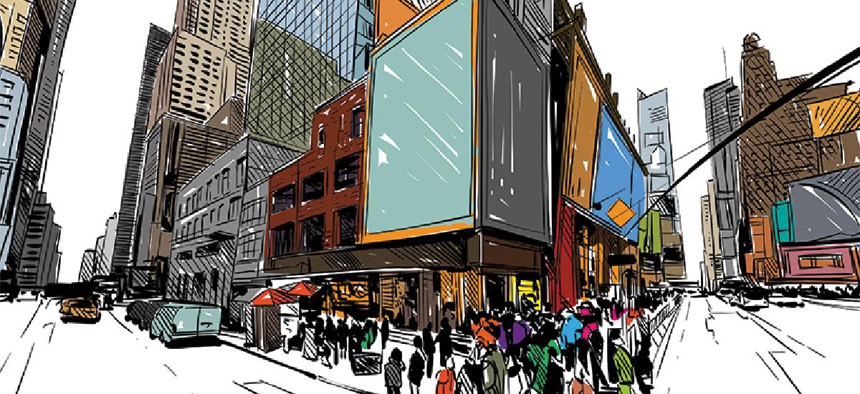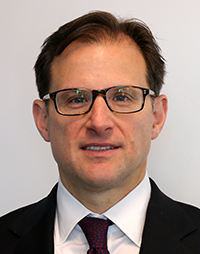The word “infrastructure” dates back only to the late 19th century. In 1927, one of its earlier recorded uses referred to the “tunnels, bridges, culverts, and ‘infrastructure’ work generally of the Ax to Bourg-Madame line.”
Nearly a century later, infrastructure refers to the same kinds of systems undergirding our modern world. It’s the crisscrossing streets and the sprawling network of highways and freeways. It encompasses the bridges ferrying passengers over rivers and valleys, and the tunnels that go under water or through rock. It includes subway lines and commuter railroads, train stations and bus terminals, airports and seaports. It means the pulsing web of electrical lines and broadband cables, and the pipes carrying drinking water into residents’ homes and the wastewater pipes flushing it away.
In the following interviews with Jeffrey Nordhaus, executive vice president of innovation and broadband at Empire State Development, and Assemblyman Steve Englebright who chairs the committee on environmental conservation, we look ways technology and the environment impact New York's infrastructural development and their priorities heading into a new legislative session.
RELATED: A status update on Cuomo's six biggest transportation projects
Jeffrey Nordhaus
Executive Vice President of Innovation and Broadband, Empire State Development
C&S: What does your job entail?
JN: At the Empire State Development’s innovation and broadband department, we manage two programs. We oversee or manage the governor’s $500 million New NY Broadband Program, and the goal of that program is to ensure broadband access at the speed of 100 megabits or better to all New Yorkers. And we are providing incentives to companies to build out unserved and underserved communities across the state to meet that goal. In addition, we manage a $100 million venture capital program on behalf of New York state.
Innovation primarily relates to the venture capital fund that is all about funding new, innovative and startup tech companies around the state. Obviously, broadband facilitates innovation and helps drive the innovation economy, which is the focus of Empire State Development.
C&S: What is the status of the state’s effort to bring broadband internet to New Yorkers across the state? Why is this effort important?
JN: Since we started the New NY Broadband Program about two years ago, we have grown the availability or access to high-speed broadband from about 70 percent statewide to 98 percent commitments in place for high-speed broadband. We have achieved some great steps forward in getting broadband accessibility for all New Yorkers and are currently in the process of implementing the third phase of the program, as we move to broadband for all. In terms of importance, we believe that access to broadband is no longer a luxury but a necessity, and really a requisite for New Yorkers who have kids in school, want to participate in the modern economy and for those seeking jobs and health care applications, etc. Broadband is really the driver for those moving forward. Both the governor and ESD believe this service is essential for all New Yorkers in today’s economy.
C&S: What are the projects being undertaken this year? What do you hope to achieve while in office?
JN: I think that the team at the broadband office is very proud of the work we’ve been able to do on behalf of all New Yorkers to really be the first state in the country to push for broadband for all, which is access to high-speed internet for all New Yorkers and have those commitments in place by the end of 2018. We are very proud that the most remote and rural areas in the state, large and small communities have equally good access to broadband. Broadband access in rural communities allows all New Yorkers to participate in the modern economy, for those working remotely, and also its a great driver for tourism and economic development. We are proud of the work we’ve done over the last two years to bring broadband to these rural areas and that the Federal Communications Commission dedicated $170 million funding. We were proud to work with state and federal leaders to get that money dedicated to the New York state broadband program, and were able to launch a joint operation with the federal government through the FCC auction to save areas potentially at the risk of losing broadband coverage and ensure they would have strong coverage in the future.
The venture capital team is working really hard to ensure the availability of capital to startups and tech companies across the state so that we’re enabling New York to remain an economic engine and exciting place to live as well.
RELATED: NYPA president assesses the damage to Puerto Rico’s power grid
Steve Englebright
Chairman, Assembly Committee on Environmental Conservation
C&S: What’s your top environmental priority for the upcoming legislative session?
SE: I would like to continue to work on water infrastructure, protection of our lands and water. This year, we closed the budget with $2.5 billion for water infrastructure improvements. We believe that there is (an) $80 billion need in this state for infrastructure for water. Water is the first limiting factor for any communities, or their ability to be communities, as we’re seeing now in Puerto Rico where people line up for seven hours to get a bottle of water. When the infrastructure breaks down for providing water and treating water, the consequences are profound. So that’s a high priority.
C&S: You sponsored legislation to conserve more land as part of the Pine Barrens region. Some critics wanted to use the land for more solar panels. Why did you support conservation over energy?
SE: I have one of the longest track records of strong advocacy for solar that you’ll find anywhere in the state. I also have a long advocacy for proper land use and water protection. My advocacy for the preservation of these properties within the core areas of the central Pine Barrens region is based upon merit, not because it’s in my immediate neighborhood. These are properties I’ve been aware of for many years and we’re pleased that we are now completing the boundaries of the Pine Barrens preservation area. It makes sense within the context of the other publicly owned parks and wildlife regions.
C&S: Earlier this year, the Long Island Power Authority approved what would be the nation’s largest wind farm. What impact will that have?
SE: I think it’s a positive initiative. I believe one of the things we should continue to monitor is the effect on marine mammals. I believe that we should continue to monitor the potential for harm to these creatures. And I also believe, overwhelmingly, there is a likelihood that we can find ways to both have the offshore wind and protect our marine mammals. I’m a strong supporter of the initiative. I mention my caution about the great whales only because they are a very important part of the oceanic ecosystem. I think that we are going to do what we need to do at the state level to protect the health and well-being of our natural areas and the people who depend upon the waters that gather in forest regions of our state, such as Pine Barrens. But I would like to see the federal government be more responsible. We need our tax dollars to be utilized in a manner consistent with the precedent that has been set in the early 1970s when the Clean Water Act was passed.




